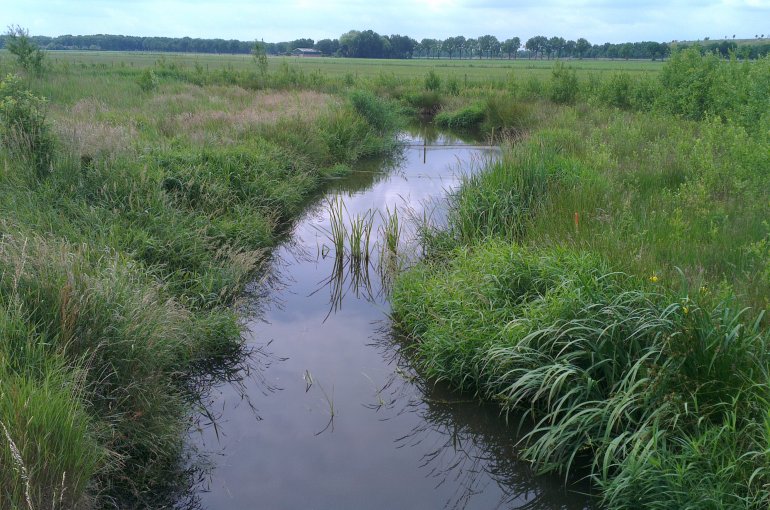The potential distance of seed dispersal through streams, and the implications for species conservation
Research project by Bettina Kaphingst working with Monique de Jager & Merel Soons

We live in an ever-changing world, in which habitats are constantly shifting. Most animals can travel from place to place, moving with their habitats, but plants generally cannot. Therefore, in order to survive as a species, plants need to ensure that their seeds make it to a suitable place for growth. They distribute their seeds in a variety of ways, and depending on the environment that best suites the parent species, seeds are adapted to the most appropriate mode or modes of transport. Wind, animals, and water are the most common mechanisms for plant seed dispersal. Understanding how these mechanisms work, and how plants adapt to each, is an important part of understanding how plants will survive in the future, and how we can help conserve them over time.
Our research looked specifically at how seeds move through water. We used seed mimics made of cork and tested their distribution in small lowland streams in the Netherlands. These were released at one end of the stream, and after 24 hours we collected them, recording how far they made it and where they got trapped along the way. To test the impact of differences in plant characteristics we used four different sizes of mimics, and to test the impact of stream characteristics we compared restored streams with channelized streams. We also used the speed and distance data to calculate how far the mimics would have been able to distribute if we had given them unlimited time.
We found that generally an average seed would be able to travel about 2 km in the summer months, given unlimited time. Larger seeds generally travel further than smaller seeds, because smaller seeds get trapped more easily than larger seeds. Restored streams trap more seeds than channelized streams, but and yet because of the differences in where they get trapped, seeds are able to travel further in restored streams than in channelized streams.
Considering our findings, we felt that restored streams were generally better environments for plant growth than channelized streams – as they are meant to be. Unfortunately, restored sections of streams are probably not close enough to one another to make it easy for plants to get from one section to the next. This is very important for anyone interested in conserving plants, and we would recommend that more streams should be restored, and that they should be placed within 2 km of each other.

